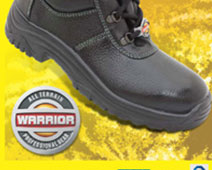Regardless of whether you work outdoor or indoor, when working in a perilous work environment, your feet are vulnerable. This is why wearing safety shoes are essential. However, with a wide range of shoes available for different work situations, choosing a pair to suit your requirements might be a daunting task. Therefore, to make this task easier for you, here we’ve listed the meaning of top 3 common two and three letter codes that are used by suppliers of safety shoe in India and other countries too.
Codes beginning with P are less commonly used and are used for 100 Joule toe caps. Again, codes beginning with an S are used for 200 Joule toe caps. Here is a better understanding of the 3 common codes.
• S1 and S1P
In case you work in workplaces where you need to deal with electrical and sharp objects, safety shoes with these S1 and S1P codes are the best.They will ensure complete protection to your feet while working in such conditions. Shoes with these codes are designed with absorbing heel area and anti-static properties. Also, their penetration-resistant quality protects you from dangers.
• SB
For those who aren’t aware, Joules is the unit of energy and shoes with ‘SB’ code protect you from an impact of up to200 Joules. This ensures that your feet aren’t damaged or punctured from any accident at your work site.
• SBP
Shoes with this code ensure that your feet are protected from sharp objects at your workplace as they are designed with penetration resistant soles. The sole has stainless steel or aluminium inserted in it that protects your feet. Thus, if your workplace demands working with sharp objects, these shoes are the best.
We hope this post will help you make selection wisely. For more information on the codes, do write to us.








